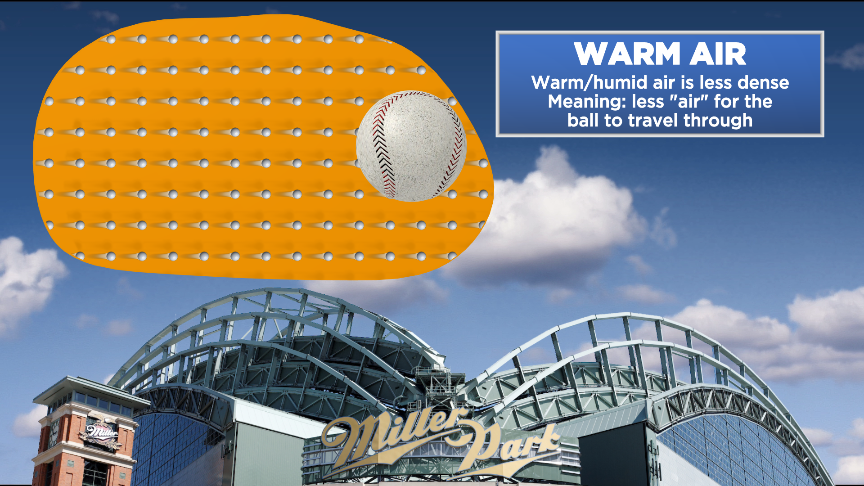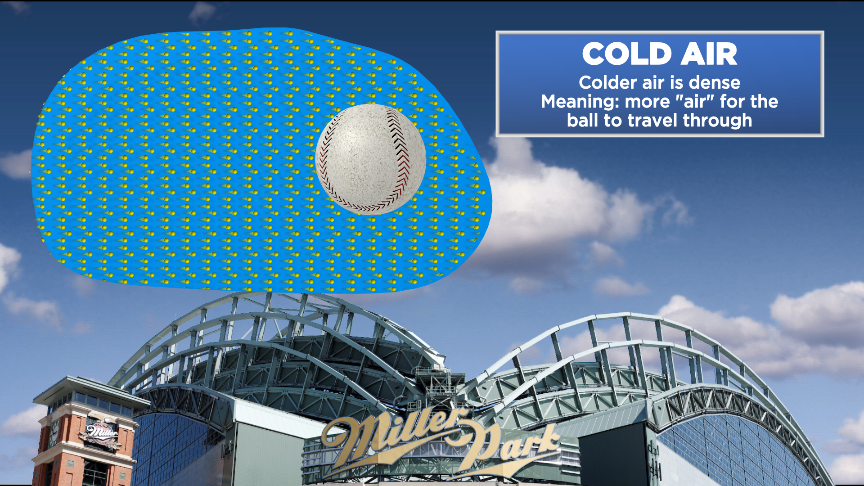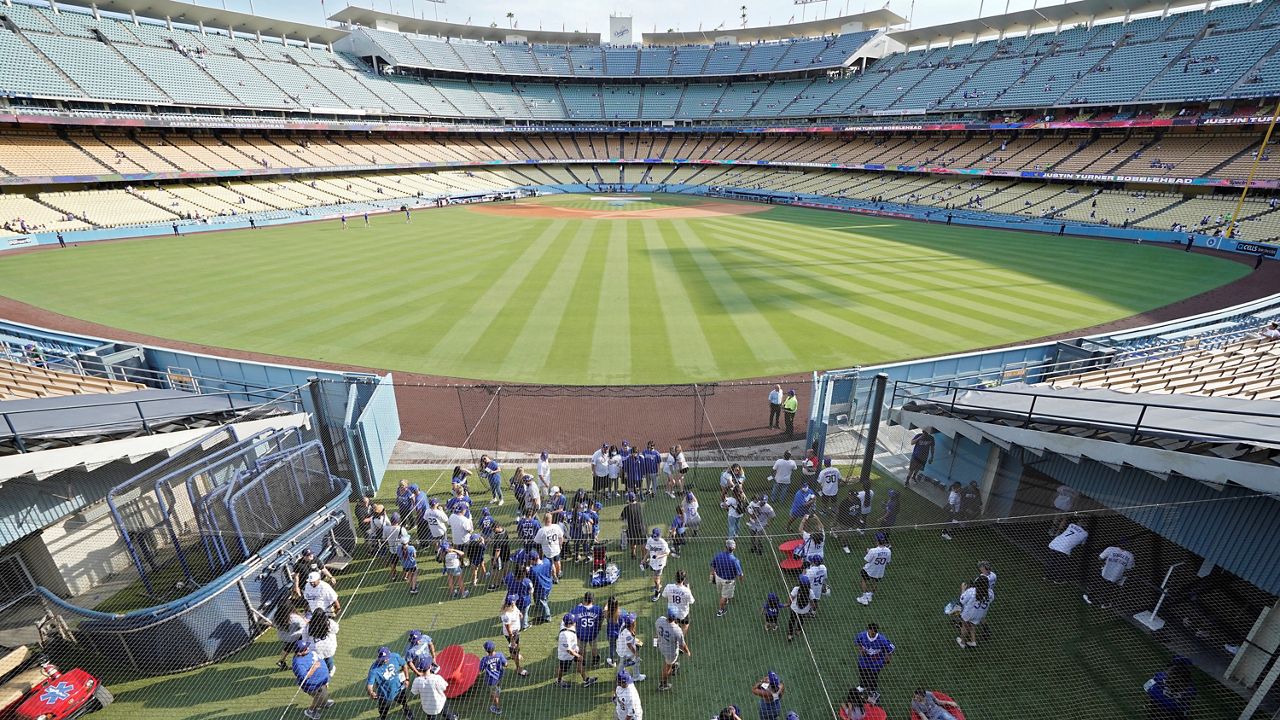The crack of a bat, the cheering of a crowd and the vendor guy yelling “hot dogs here, get yer hot dogs here...” On a humid night, you may see more baseballs leave the park. Here is why.
While it’s easy to see the effect that weather like rain and wind can have on a baseball game, one aspect often overlooked is an important one: temperature. Along with that, humidity.
See, in warm air, the molecules are less dense (more spread out).

Whereas in colder air, the molecules are more dense (closer together).

This affects how the ball moves through the air.
To get extra technical for a second: humid air holds more moisture. That water vapor is really light and helps push heavier molecules like oxygen and nitrogen out of the way, giving the ball a better lane to travel.
On days and nights where there is more humidity (higher dew
points), this increases the chance for the ball to travel farther.
Of course, in the grand scheme of things, we are only talking about an extra few inches of travel here. However…
When you factor in air temperature, it gets more interesting. With all things being equal, every 10 degrees above 75 degrees can help push a baseball about three feet farther. This according to research done by Alan Nathan, a former physics professor at the University of Illinois. Want to read that? Here is a link.
A hot day near 95 degrees with a dew point near 70: gross weather to stand around in, but excellent for making baseballs travel.
So think back to the games you’ve been to or watched on TV. Think about when the home runs were hit. You will see a lot more of them in the summer months and especially on an extra humid night.
Moreso, you will see a lot more home runs hit in ballparks in warm/humid climates (Texas, Florida and even California). The weather, playing an even larger role in baseball than we knew.
Of course, being a great baseball player also has a significant part.



